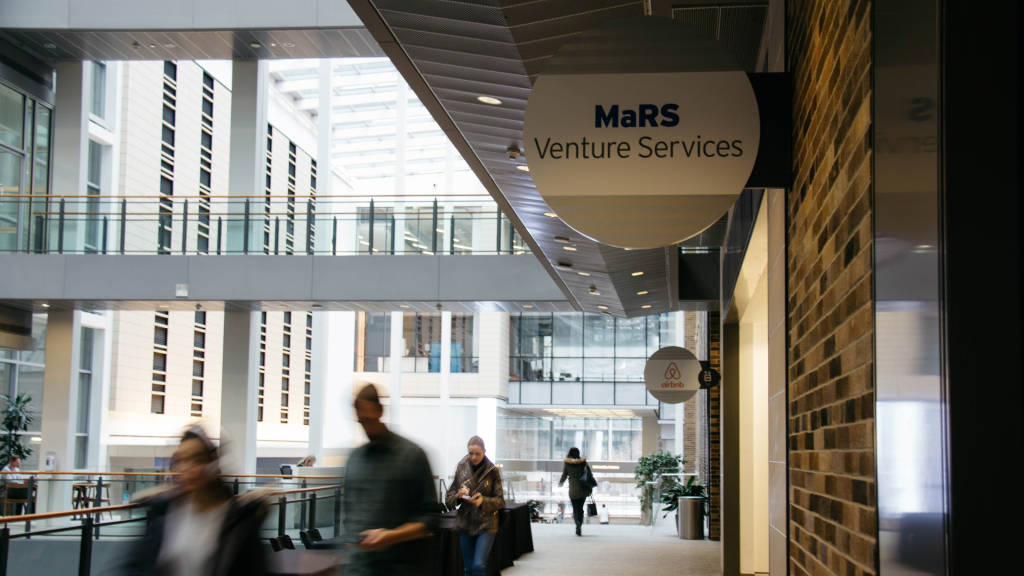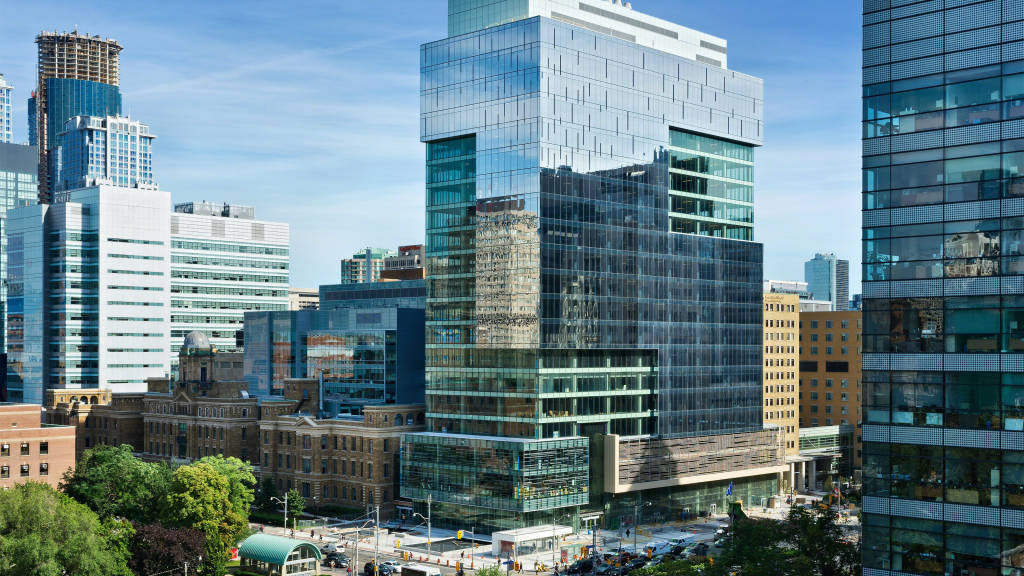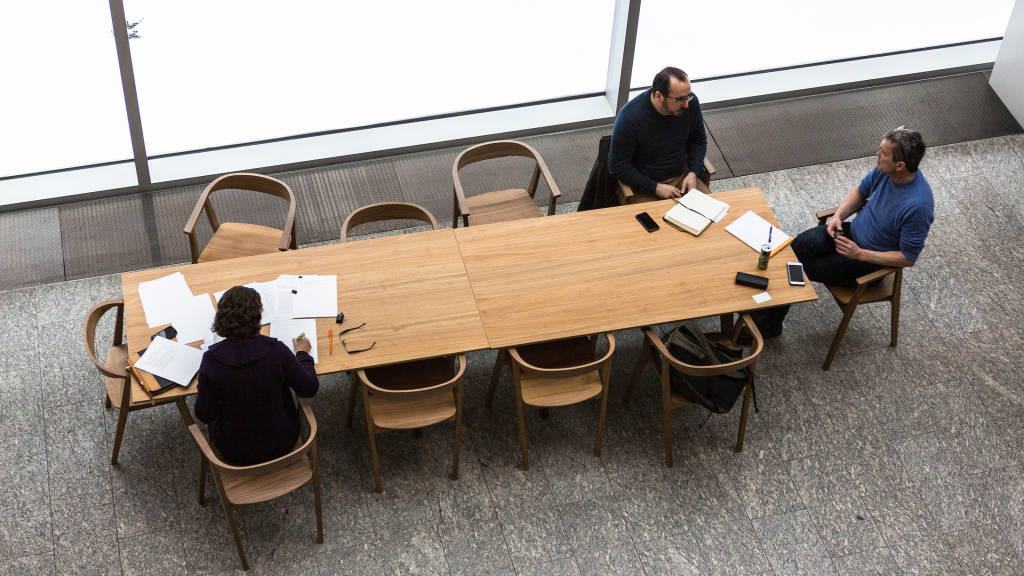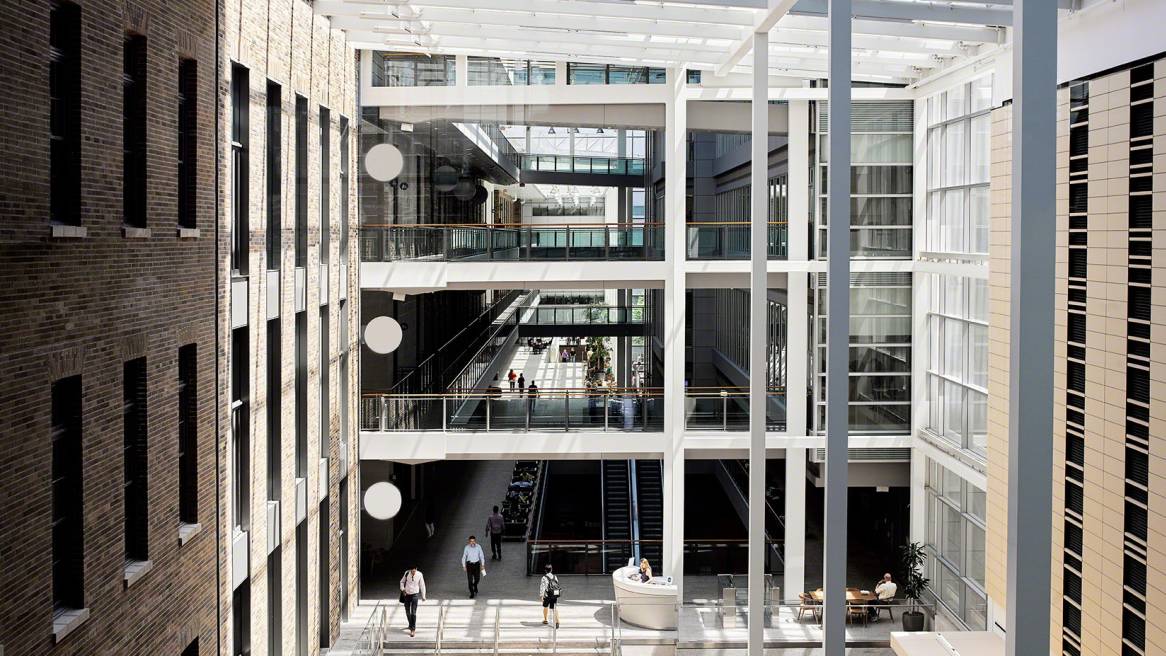Think Big and Fix Things
How MaRS nurtures a steady stream of creativity
Although the name suggests otherwise, MaRS is grounded in challenges that affect humans on earth. As the world’s largest urban hub for innovation, it exists to help entrepreneurs launch and grow innovative companies that make the world a better place. Everyone who is part of MaRS is encouraged to “think big and fix things.”
Founded in 2005 as a private/public not-for-profit organization in the heart of Toronto, MaRS provides encouragement, funding and a workplace for entrepreneurs and innovative startups in four key sectors—health, work and learning, energy and environment, and finance and commerce. It helps startups get to a higher level of impact by curating and carefully matching them to companies in its extensive global network of corporate partners, which includes Steelcase—companies that are serious about accelerating innovation through win-win relationships.
“We call ourselves MaRS-ians because each of us is really passionate about the mandate of innovation and solving big problems for societal good,” says Sonia Lagourgue, senior manager, Partner Success, Corporate Engagement. “We’re here to amplify the great work that Canadian entrepreneurs are bringing to the world and to make sure they have the resources and the networks to be successful.”
Lagourgue works closely with corporate partners like Steelcase to understand their innovation strategies and then introduce them to startups with potential relevance to their interests and goals. It’s a consultative, individualized and personalized approach.

The result is innovations such as WinterLight Labs’ AI technology that quickly and accurately breaks down speech and language patterns to help detect and monitor diseases like Alzheimer’s. Just a few other examples of innovations that MaRS has nurtured are Advanced Energy Centre’s blockchain-enabled solutions for energy storage and Knockri’s artificial intelligence that lets companies screen job candidates without culture- or gender-based biases.
At MaRS, there’s a strong belief that innovation doesn’t happen on its own; more than ever before, place matters. “We believe space is a platform for how business is done today,” explains Lagourgue. In addition to capital, she says, entrepreneurs need to be able to network and collaborate.
MaRS over-delivers on both fronts, providing labs and offices for 150 organizations, from startups to large multinationals, and functioning as a hub for more than 1,200 ventures. More than 6,000 innovators come to work at MaRS every day to meet, share ideas, learn and create coalitions.
Demystifying Innovation
In the heart of Toronto’s Discovery District, a center of universities, hospitals and research enterprises that neighbors the financial district, MaRS is absorbing and contributing to the vibrancy of this city that’s become a high-tech hotbed, thanks in no small part to the pioneering work of Toronto researcher Geoffrey Hinton, the so-called “Godfather of AI.”

“We’re seeing innovation move out of isolated suburban campuses where it’s mysteriously run by technology companies and out of the corners of university labs where no one really knows what’s going on,” observes Lagourgue. “Instead, MaRS is integrated into the economic fabric of Toronto and the talent networks that exist here. Innovation is at the heart of everything that’s happening in this city.”
In addition to its urban location, MaRS is also at the forefront of several other shifts that are changing how innovation happens today.
“Entrepreneurship has moved forward dramatically and become more mainstream,” says Lagourgue. “It’s being taught in schools, there are tons of resources and experts to follow. Plus, advanced technologies are becoming more affordable and accessible, so it’s easier for people to build technology-enabled solutions and launch a business—you can turn an idea into a startup with a smartphone and a credit card!”
“We want to elevate the capacity for innovation across the whole ecosystem. Corporations and startups are both part of that value chain. By facilitating partnerships, we’re helping both parties leverage each other’s strengths in a solution that’s mutually beneficial so they both can achieve more.”
Sonia LagourgueSenior Manager, MaRS Discovery District
At the same time, she says, large organizations are starting to understand that they have to integrate innovation as part of their day-to-day operational fabric, as opposed to just relegating it to some type of sidelined R&D function. “Because there’s so much more demand, they have to respond much faster and more authentically, and constantly evolve at the same pace that technology is evolving. They can’t do all that internally on their own, at least not fast enough. They have to get comfortable with partnering, collaborating, acquiring or investing in order to keep up with trends and demands.”
Creating Coalitions
While the demand for innovation is higher and faster-paced than ever, it remains difficult. The overall failure rate for startups is about 90 percent. It’s not easy for ventures to get the support they need to turn their ideas into a profitable reality, and they struggle to find markets and navigate the corporate world to gain scale.

Meanwhile, big businesses are challenged to access the steady stream of ideas and talent they need to be more innovative and move their businesses forward. Organizations like MaRS can help. Lagourgue describes its open approach as “a coalition of the willing who understand that innovation will be the driver of their success.”
MaRS works hard to make coalitions happen successfully. “We want to elevate the capacity for innovation across the whole ecosystem. Corporations and startups are both part of that value chain,” says Lagourgue. “By facilitating partnerships, we’re helping both parties leverage each other’s strengths in a solution that’s mutually beneficial so they both can achieve more.”
Photography courtesy of MaRS Discovery District


